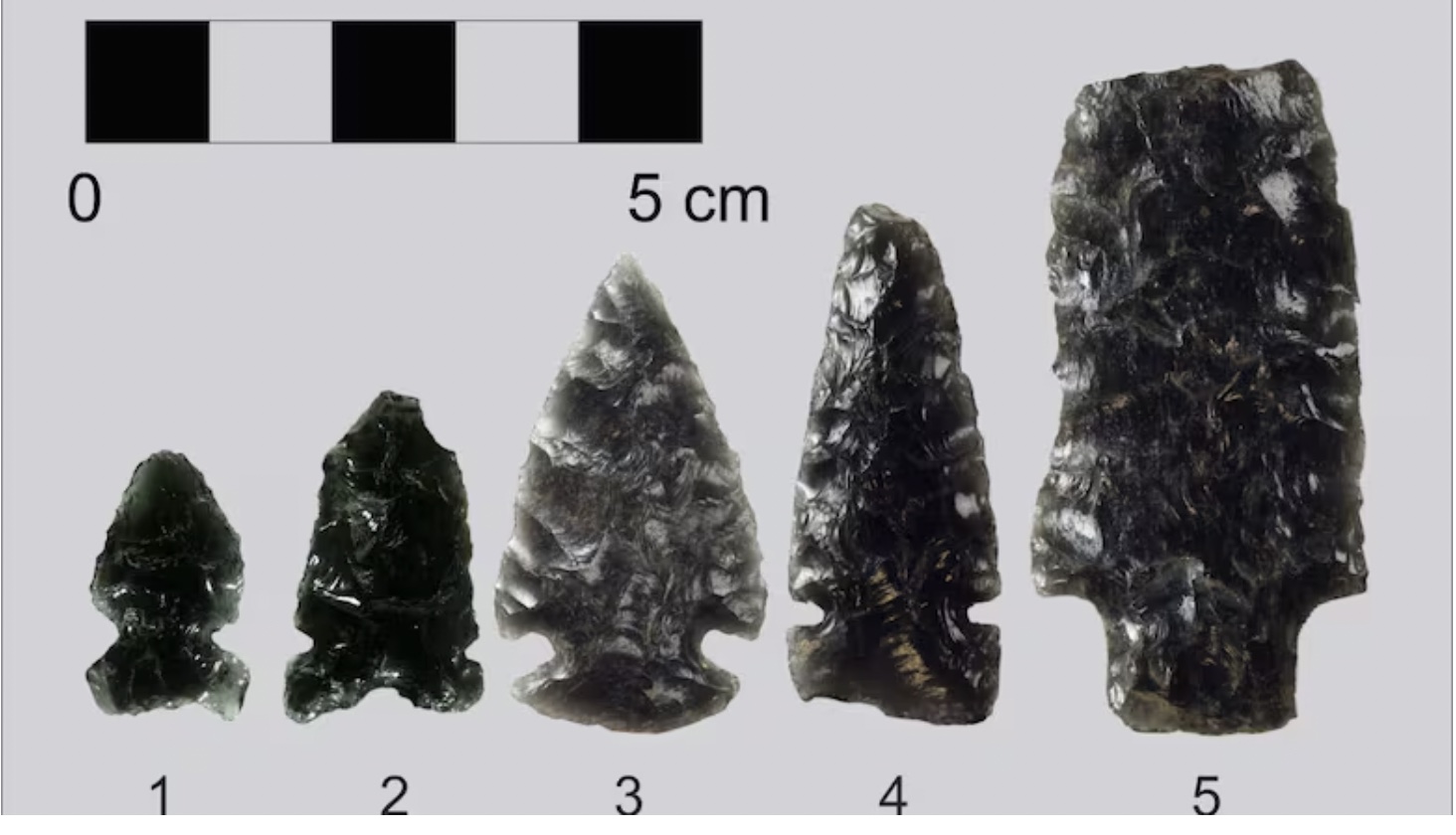Anthropology
Related: About this forumCanada's Indigenous Communities Operated Vast Obsidian Trade Network
April 4, 2025

Obsidian tools
Alberta Obsidian Project
ALBERTA, CANADA—According to a CBC report, an extensive new project has highlighted just how vast the trade network in obsidian was for Indigenous communities living during the precontact period in current-day Alberta. Obsidian, a type of volcanic glass, was indispensable for many ancient cultures around the world because it can be easily shaped into arrowheads and cutting tools. No volcanoes have ever erupted in Alberta, however, so every sherd of obsidian was transported there from elsewhere. Researchers from the Alberta Obsidian Project analyzed 383 obsidian fragments from 96 sites across the area dating to between 13,000 and 300 years ago. They determined that the artifacts traveled from sources as far away as 750 miles, with the majority coming from Bear Gulch, Idaho, and Obsidian Cliff, Wyoming. The researchers suggest that in southern Alberta the presence of communal bison jumps facilitated trade networks among various communities that lived and harvested together near the American Southwest. “The sheer scale of obsidian trade tells us that likely millions of people were in contact with one another," said archaeologist Timothy Allan. “The scope of the trade network was way more massive than we thought.” Read the original scholarly article about this research in Archaeological Survey of Alberta. To read about a 1,600-year-old roasting pit uncovered at a buffalo jump site in Alberta, go to "A Removable Feast."
https://archaeology.org/news/2025/04/04/canadas-indigenous-communities-operated-vast-obsidian-trade-network/
~ ~ ~
Obsidian in Mesoamerica
by Mark Cartwright
published on 24 August 2022
Obsidian is a dark volcanic glass which provides the sharpest cutting edge available in nature. Ancient Mesoamerican cultures greatly esteemed the properties of obsidian, and it was widely traded across the region. Obsidian was used to create tools, weapons, and, when polished, for mirrors and as a decorative inlay in anything from jewellery to ritual masks.
Properties & Trade
Obsidian (chemical name: silicon dioxide) is a type of volcanic glass created when hot lava cools and solidifies so quickly that crystals have no time to form in it. Made of a variety of chemical compositions, most obsidian is silica based. Obsidian is usually black but can come in a range of shades such as blue-black, peacock, mahogany, and even much lighter, greenish ones. These colour variations are caused by the presence of minerals like hematite or minute bubbles of gas. It can also come with white flecks of cristobalite (snowflake obsidian).
Despite the lack of rarity of the raw material, worked pieces of obsidian were greatly prized by all Mesoamerican cultures from the Olmecs to the Aztecs (aka Mexica), and so it was one of the earliest and most commonly traded goods. It was particularly valued for the super-sharp cutting edge that carefully chipped obsidian can provide, as sharp as any modern razor blade (indeed, some surgical procedures today involve the use of obsidian-edged scalpels). Obsidian is easily thinned by striking it with a harder stone to remove flakes along conchoidal fractures (which appear shell-like). Its use in weapons and tools of various kinds has led the historian M. E. Miller to describe obsidian as "the 'steel' of the New World" (11). The material was also esteemed for its smooth texture and unusual dark vitreous lustre when polished, which ancient Mesoamericans usually achieved using abrasive sand.
As with other sought-after materials like jade and turquoise in Mesoamerica, the more unusual varieties of obsidian were the most highly valued. A rare olive-green type of obsidian was obtained from the Sierra de las Navajas mines at Pachuca, and nearby Tula (aka Tollan) became a major trading centre for obsidian. Tula was the capital of the Toltec civilization which flourished in central Mexico between the 10th and mid-12th centuries. The number of obsidian workshops at Tula has led to historians estimating that around 40% of Tula's total population of 30–40,000 people was engaged in working obsidian for the city's needs and for trade.
More:
https://www.worldhistory.org/article/2060/obsidian-in-mesoamerica/


Images drawn by Spanish invading priests of Aztec warriors carrying their Macuahuitl wooden swords embedded with obsidian blades.
Interesting but not surprising. I live about 65 miles from Obsidian Cliff, it's the one in YNP. The site in Idaho is not far from there and is occasionally where some anthropology summer field camps are held, my alma mater being one of them - Idaho State U..
That being said, there is an abundance of obsidian in the region as the 'hot spot' lava pool is enormous and would destroy large portions of three states if/when it blows up. Our 'black sand' is obsidian sand, tires don't last as long if you do a lot of dirt road travel, other things are also affected by the sharp particles, going barefoot not recommended.
Originally I was going to jokingly tell you,
"...yeah, that obsidian stuff grows all over the place around here." ![]()
Thanks for posting all these anthro articles, I try to read them all. They're great mental floss!
![]()